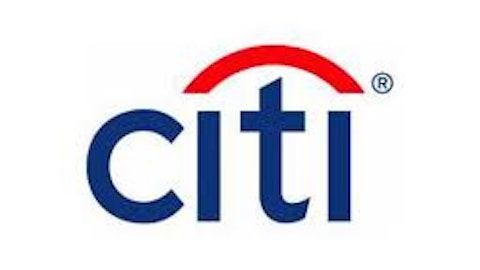
The StressTest column appears every Thursday on Fool.com. Check back weekly and follow @TMFStressTest on Twitter.
September 15th will mark the five-year anniversary of the Chapter 11 bankruptcy filing for Lehman Brothers. While five years was enough time for Lehman to emerge from bankruptcy, I’d argue it isn’t nearly enough time to digest some of the most eye-popping numbers associated with the downfall of the giant investment bank.
Here are seven of those numbers that continue to blow my mind today.

The number above represents the total assets reported by Lehman Brothers for the quarter ending May 31, 2008. That quarterly report — issued in July of 2008 — was the last quarterly filing that Lehman would make. The asset base made Lehman Brothers the largest bankruptcy in U.S. history.
For comparison, General Motors Company (NYSE:GM) had just $89 billion in assets prior to its bankruptcy filing (it has $163 billion today), and Enron was a mere small fry with $66 billion in pre-filing assets.
Lehman’s largest single-line item on its balance sheet was “Financial instruments and other inventory positions owned” at $269 billion. And that’s exactly where much of the problem lay. The counterparties Lehman relied on for credit lost confidence that the reported value of those assets represented the reality of what they could fetch on the open markets.

This was the total shareholders’ equity that Lehman reported prior to its bankruptcy filing. The number is significant for two primary reasons.
Shareholders’ equity is the difference between a company’s assets and liabilities and essentially represents the that a company has against losses. A $26 billion cushion may sound like a sizable chunk of change, and it is. What’s shocking here is that in the course of just a few months, the company went from having a multi-billion equity cushion to sagging into bankruptcy protection.


According to Bloomberg, creditors of the Lehman estate will receive roughly $0.18 on the dollar when all is said and done in 2016. I don’t have much more to say about that — that number does a darn good job speaking for itself.

According to the latest estimates from Lehman, this is the amount that will cumulatively be paid out for the operations between 2012 and 2014. A staggering $1.1 billion of that amount is for “professional fees” which goes principally to the lawyers and restructuring specialists working with the company. If you’re curious who specifically are the big beneficiaries of this payout, look no further than Alvarez & Marsal, Houlihan Lokey Howard & Zukin, and Lazard Freres & Co. (a subsidiary of Lazard Ltd (NYSE:LAZ)).
Of the remaining $1.1 billion, close to $800 million of it is expected to go to compensation for the remaining employees that are running the operations around the remaining assets so they retain as much value as possible.
And do note: The $2.25 billion here is on top of the costs and fees racked up prior to 2012.

Believe it or not, this was the amount Barclays PLC (ADR) (NYSE:BCS) paid for the investment banking and capital markets operations that it purchased from Lehman. In total, Barclays coughed up $1.75 billion for the purchase, but $1.5 billion of that was allocated to real assets — Lehman’s New York City headquarters and two data centers.
That Barclays PLC (ADR) (NYSE:BCS) was able to grab Lehman’s operations for such a small sum is incredible looking back today. Notably, Barclays was one of the lead underwriters on the recent $49 billion debt issuance for Verizon Communications Inc. (NYSE:VZ). Would it have been in that position without the Lehman operations? I doubt it.

Promise me you won’t lose your lunch, here: This number represents the total compensation for Dick Fuld, the former CEO of Lehman Brothers, for 2007. Amazingly, just one year after receiving this compensation package, Fuld led the company into bankruptcy.
To be perfectly fair though, much of the compensation package was in stock and options — $29.2 million of it to be precise. And that stock ended up worthless. Further, Fuld owned 10.9 million Lehman shares at the beginning of 2008 — an ownership position worth nearly $700 million at that point. His equity stake was lit on fire just like the rest of the equity shareholders’.
Still, $5 million of Fuld’s 2007 compensation was in cash. That’s an amount most of us would probably be ecstatic to save over a lifetime.

This final number fell in my lap just today thanks to a Bloomberg Businessweek interview. It represents Meredith Whitney’s estimate of her own personal losses on financial stocks during the meltdown. This is a major revelation considering Whitney was lauded as a financial-stock genius and crisis seer both during and after the downturn.
As she told Businessweek: “I rode Lehman all the way down to zero. It’s pretty ironic, right? That, I don’t think anyone knows.” They do now, Meredith, they do now.
The article 7 Mind-Blowing Numbers From the Lehman Brothers Disaster originally appeared on Fool.com.
Matt Koppenheffer owns shares of Bank of America, Morgan Stanley, and Barclays. The Motley Fool recommends Bank of America and General Motors. The Motley Fool owns shares of Bank of America and LAZARD.
Copyright © 1995 – 2013 The Motley Fool, LLC. All rights reserved. The Motley Fool has a disclosure policy.





